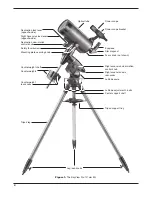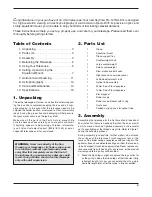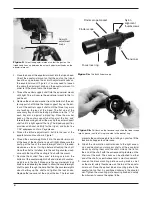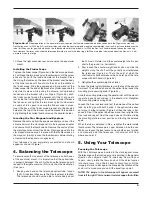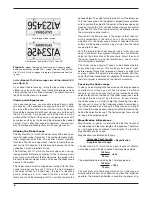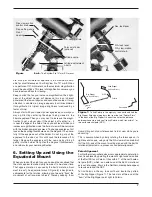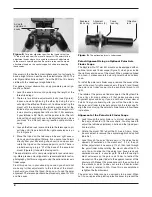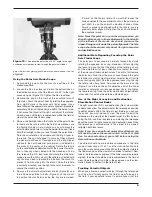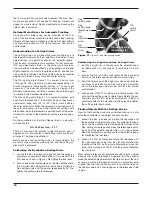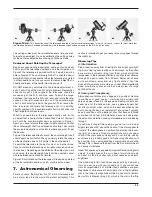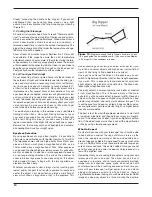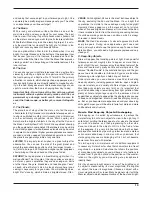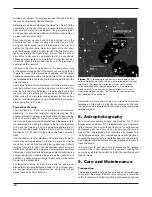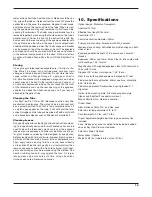
7
ure of 2x per millimeter of aperture is the maximum attain‑
able for most telescopes. Your SkyView Pro 127mm EQ has
an aperture of 127 millimeters, so the maximum magnification
would be about 254x. This level of magnification assumes you
have ideal conditions for viewing.
Keep in mind that as you increase magnification, the bright‑
ness of the object viewed will decrease; this is an inherent
principle of the laws of physics and cannot be avoided. If mag‑
nification is doubled, an image appears four times dimmer.
If magnification is tripled, image brightness is reduced by a
factor of nine!
Always start with your lowest power eyepiece and work your
way up. Start by centering the object being viewed in the
25mm eyepiece. Then you may want to increase the magni‑
fication to get a closer view. If the object is off‑center (i.e., it
is near the edge of the field of view) you will lose it when you
increase magnification since the field of view will be narrower
with the higher‑powered eyepiece. To change eyepieces, first
loosen the securing thumbscrews on the diagonal. Then care‑
fully lift the eyepiece out of the holder. Do not tug or pull the
eyepiece to the sides, as this will knock the telescope off its
target. Replace the eyepiece with the new one by sliding it
gently into the holder. Re‑tighten the diagonal thumbscrews,
and re focus for your new magnification.
6. setting up and using the
Equatorial Mount
When you look at the night sky, you no doubt have noticed that
the stars appear to move slowly from east to west over time.
That apparent motion is caused by the Earth’s rotation (from
west to east). An equatorial mount (Figure 6) is designed to
compensate for that motion, allowing you to easily “track” the
movement of astronomical objects, thereby keeping them
from drifting out of your telescope’s field of view while you’re
observing.
This is accomplished by slowly rotating the telescope on its
right ascension axis, using only the R.A. slow‑motion knob. But
first the R.A. axis of the mount must be aligned with the Earth’s
rotational (polar) axis—a process called polar alignment.
Polar alignment
For Northern Hemisphere observers, approximate polar align‑
ment is achieved by pointing the mount’s right ascension axis
at the North Star, or Polaris. It lies within 1° of the north celes‑
tial pole (NCP), which is an extension of the Earth’s rotational
axis out into space. Stars in the Northern Hemisphere appear
to revolve around the NCP.
To find Polaris in the sky, look north and locate the pattern
of the Big Dipper (Figure 7). The two stars at the end of the
“bowl” of the Big Dipper point right to Polaris.
Figure
6a‑b.
The SkyView Pro 127mm EQ mount.
a.
b.
Dec. slow‑motion
control knob
Dec. setting‑circle
Front
opening
R.A. setting‑circle
Polar axis finder
(optional)
Latitude scale
Latitude adjustment
L‑bolts
Dec. lock lever
R.A. lock lever
R.A. slow‑motion
control knob
Big Dipper
(in Ursa Major)
Little Dipper
(in Ursa Minor)
Cassiopeia
N.C.P.
Pointer
Stars
Polaris
Figure 7.
To find Polaris in the night sky, look north and find the
Big Dipper. Extend an imaginary line from the two "Pointer Stars"
in the bowl of the Big Dipper. Go about five times the distance
between those stars and you'll reach Polaris, which lies within 1° of
the north celestial pole (NCP).
Right
Ascension
(R.A.) axis
Declination (Dec.) axis


